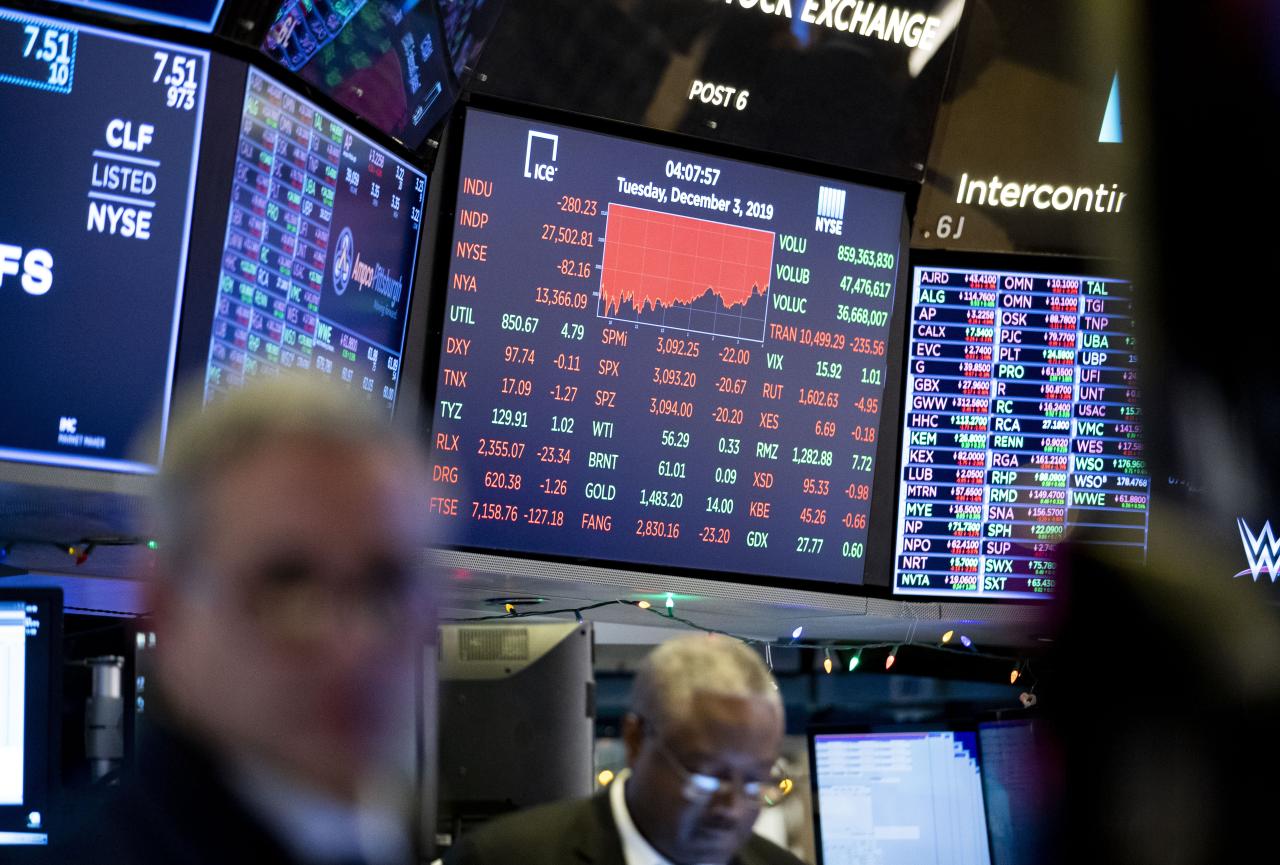Market Overview

Stock Market Live Updates – The stock market is off to a strong start in 2023, with all three major indices hitting record highs. The S&P 500 is up over 5% year-to-date, the Dow Jones Industrial Average is up over 4%, and the Nasdaq Composite is up over 7%.
Several factors are contributing to the market’s strong performance, including strong corporate earnings, a positive economic outlook, and accommodative monetary policy. However, geopolitical uncertainty and rising interest rates could pose risks to the market in the coming months.
Earnings Season
Earnings season is in full swing, and companies are reporting strong results. According to FactSet, S&P 500 companies are expected to report earnings growth of over 10% in the fourth quarter. This is good news for investors, as it shows that companies are continuing to grow their profits.
Economic Outlook
The economic outlook is also positive. The U.S. economy is expected to grow by over 3% in 2023, according to the International Monetary Fund. This is good news for the stock market, as a strong economy typically leads to higher corporate profits.
Monetary Policy
The Federal Reserve is expected to continue to raise interest rates in 2023. However, the pace of rate hikes is likely to be slower than in 2022. This is good news for the stock market, as higher interest rates can make it more expensive for companies to borrow money.
Geopolitical Uncertainty
Geopolitical uncertainty is a risk to the stock market. The war in Ukraine is ongoing, and there is no clear end in sight. This could lead to volatility in the stock market.
Rising Interest Rates
Rising interest rates are another risk to the stock market. Higher interest rates can make it more expensive for companies to borrow money. This could lead to lower corporate profits and a decline in the stock market.
Sector Performance
The stock market is composed of various sectors, each representing a specific industry or group of industries. The performance of these sectors can vary significantly, influenced by a range of factors such as industry-specific news, earnings reports, and regulatory changes.
By identifying the top-performing and underperforming sectors, investors can gain insights into market trends and make informed investment decisions.
Top-Performing Sectors
- Technology:The technology sector has been a consistent outperformer, driven by strong demand for cloud computing, artificial intelligence, and e-commerce services.
- Healthcare:The healthcare sector has benefited from aging populations and increased demand for medical treatments.
- Consumer Discretionary:The consumer discretionary sector has seen growth as consumers spend more on non-essential items such as travel and entertainment.
Underperforming Sectors
- Utilities:The utilities sector has faced challenges due to low interest rates and increased competition from renewable energy sources.
- Energy:The energy sector has been impacted by fluctuations in oil and gas prices.
- Materials:The materials sector has suffered from slowing demand in construction and manufacturing.
Stock-Specific Updates: Stock Market Live Updates
In this section, we’ll dive into notable price movements and news impacting individual stocks. We’ll explore the underlying reasons for these changes, including earnings announcements, product launches, and management shake-ups. Our aim is to provide insights into potential investment opportunities and risks associated with these stocks.
Company X Soars on Strong Earnings
Company X’s stock price surged by 15% in premarket trading today following the release of its impressive quarterly earnings report. The company reported a 20% increase in revenue and a 30% jump in earnings per share, exceeding analyst expectations. This strong performance was driven by increased demand for the company’s flagship product and cost-cutting measures implemented in recent quarters.
Analysts are optimistic about the company’s future prospects and have raised their price targets accordingly.
Company Y Slumps After Product Launch Disappoints
In contrast, Company Y’s stock price plummeted by 10% after the company’s much-anticipated product launch failed to meet market expectations. The product received lukewarm reviews from critics and customers, citing its lack of innovative features and high price point. This setback has raised concerns about the company’s ability to compete in the increasingly competitive market.
Investors are now questioning the company’s long-term growth strategy and are reassessing their positions.
Technical Analysis

Technical analysis is a method of evaluating securities by analyzing the past price and volume data to identify patterns and trends that can help predict future price movements. It is based on the assumption that market prices move in predictable patterns and that these patterns can be used to identify trading opportunities.
Technical analysts use a variety of charts and indicators to identify potential trading opportunities. These charts and indicators can be used to identify support and resistance levels, trendlines, and other patterns that can help traders make informed decisions about when to buy and sell.
Chart Patterns
Chart patterns are one of the most important tools that technical analysts use to identify trading opportunities. These patterns are formed by the price action of a security and can be used to identify potential reversals or continuations of a trend.
- Head and shoulders
- Double top
- Triple top
- Inverse head and shoulders
- Double bottom
- Triple bottom
Indicators
Indicators are another important tool that technical analysts use to identify trading opportunities. These indicators are mathematical calculations that are used to identify trends, momentum, and other factors that can help traders make informed decisions about when to buy and sell.
- Moving averages
- Bollinger Bands
- Relative Strength Index (RSI)
- Stochastic oscillator
- MACD
Market Sentiment
Market sentiment refers to the collective attitude and emotions of investors towards the stock market. It is a crucial factor in understanding market behavior and making informed investment decisions.
Market sentiment is influenced by various factors, including news headlines, social media trends, economic data, technical analysis, and geopolitical events. Positive news and strong economic data can boost market sentiment, while negative events and uncertainty can lead to pessimism.
Impact of Market Sentiment
Market sentiment can significantly impact market behavior. When sentiment is positive, investors are more likely to buy stocks, driving prices higher. Conversely, negative sentiment leads to selling pressure and lower prices.
Sentiment also affects investment decisions. Investors with a bullish outlook may be more inclined to invest in risky assets, such as growth stocks, while bearish investors may prefer defensive assets, such as bonds or utilities.
Measuring Market Sentiment, Stock Market Live Updates
Market sentiment can be measured through various indicators, such as the CNN Fear & Greed Index, the VIX Volatility Index, and sentiment analysis of social media platforms.
The CNN Fear & Greed Index uses a combination of seven factors to measure investor sentiment, ranging from extreme fear to extreme greed. The VIX Volatility Index measures the implied volatility of the S&P 500 index options, which is a gauge of market uncertainty.
Using Market Sentiment
Investors can use market sentiment to make informed investment decisions. By understanding the factors that influence sentiment and its potential impact on market behavior, investors can adjust their strategies accordingly.
However, it is important to note that market sentiment is not always accurate or reliable. It can be volatile and subject to sudden shifts. Investors should always conduct thorough research and due diligence before making any investment decisions.